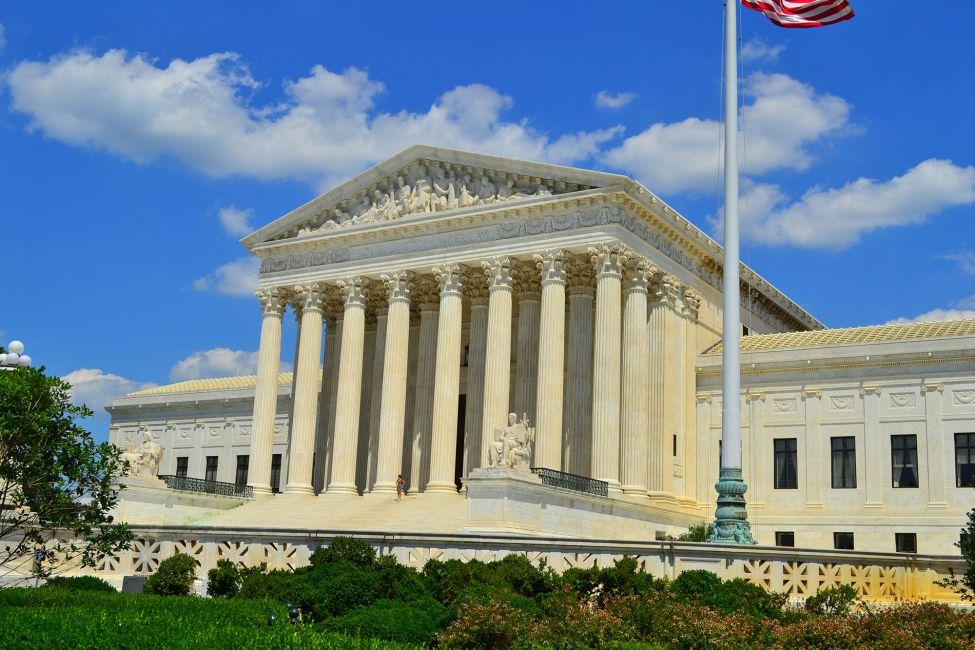How to Navigate the Changing College Admissions Landscape
In addition to keeping everything straight when it comes to the college admissions process, you may have recently started hearing and reading about how it’s undergoing some significant changes. As if you didn’t have enough to think about!
We’re going to break down some of what’s new in the college admissions process, what this means for you as an applicant, and, of course, how this all works with CIEE programs for high school graduates.
Affirmative Action in Colleges
Before diving into the recent Supreme Court affirmative action ruling that was headline news in the summer of 2023, let’s define affirmative action and provide some historical context.
Affirmative action is the practice or policy within a government or organization seeking to benefit marginalized groups who have been disadvantaged or subject to discrimination and have historically had less systemic access to resources.
An important detail is that “systemic” means “relating to a whole system.” In this case, a lack of access to resources isn’t related to one individual, instead, entire communities have less access.
Affirmative action has been used for decades and throughout history to provide marginalized groups more workplace and educational opportunities.
So, what does affirmative action have to do with college? Simply put, college admissions teams use it to fairly consider marginalized students, students who have faced systemic barriers to advanced coursework and underinvested schooling systems, just to name a few examples.
Think of it this way: we know that college admissions teams review applications holistically, meaning they consider all factors on an application, like extracurriculars, academic achievements, and more. A marginalized student might have attended a high school in a low-resource community where extracurriculars, like theater and sports, weren’t invested in, so they didn’t have the same opportunity to participate. Or, advanced placement (AP) classes might not have been available at their school, so they don’t have the same chance of academic honors or achievements.
Affirmative action in colleges means an admissions team doesn’t just compare that marginalized student’s application to another student who attended a high school with more opportunities. They instead consider the barriers in place for the marginalized student versus the privileges enjoyed by the student in an unmarginalized group. This ensures application reviewers consider the real historical and societal factors that affect marginalized students.
Affirmative Action Decision

Now, back to the Supreme Court affirmative action ruling: what happened? As a quick synopsis, the legality of affirmative action, also known as “race-conscious” admissions because many marginalized communities are communities of racial minorities, has been debated for some time; two cases ultimately made their way to the highest court in the country: the U.S. Supreme Court.
The majority ruled to invalidate affirmative action admissions programs at universities nationwide, including Harvard University and the University of North Carolina, the schools at the center of the legal case. The lengthy opinion (the written argument of the decision) reasoned that an individual’s application shouldn’t be solely race-based, but based on skills, challenges, lessons, and more. Justice Clarence Thomas reiterated his view that affirmative action imposes a stigma on minorities.
Those who disagreed with the majority ruling, including Justice Ketanji Brown Jackson, argued that “colorblindness” is an ineffective way to gauge applications fairly and isn’t reflective of human experiences in general.
However, also part of the majority opinion, Chief Justice Roberts noted, “Nothing in this opinion should be construed as prohibiting universities from considering an applicant’s discussion of how race affected his or her life.”
We know – it’s complicated stuff. Essentially, racial diversity won’t be entirely ruled out in the college admissions process; schools are taking their own measures to ensure they reach marginalized students in other ways, even if it’s in a slightly different approach than once before. But under the law they cannot practice affirmative action the way they have in the past.
And that’s not all that’s changed in the college admissions process. Next up: legacy admissions meaning.
Legacy Admissions Meaning

Legacy admissions are a practice in which higher education institutions give special consideration to children of alums when deciding to admit. In short, if your mother or father went to a university you’re also applying to, the college admissions team might admit you to the school over another student who doesn’t have a familial tie to the university.
After the affirmative action decision, many schools throughout the U.S. considered ending legacy admissions– noting that the process continued to promote advantaged students over disadvantaged students.
Legacy admissions play a prominent and controversial role at some of the top schools in the country, like Ivy League institutions. With intense competition into these schools, admitting a legacy student over another qualified student is questionable.
Legacy Admissions vs Affirmative Action
Both legacy admissions and affirmative action are processes that are significant in college admissions. While they affect students in different ways, they are both practices being questioned and ultimately, changed throughout the U.S. college admissions landscape.
What Does the Affirmative Action Decision and Legacy Admissions Mean for You?
As a result of the Supreme Court affirmative action ruling, there was a drop in minority admissions across schools in the U.S. Although the real-life consequences of this decision may be disheartening, experts advise students to keep applying.
After the ruling, some colleges and universities chose to automatically admit a certain percentage of applicants in an attempt to increase diverse candidates. Other institutions have invested millions in outreach programs to better reach diverse student populations. Some schools have even placed additional consideration on socioeconomic status to try to further diversify. Long story short: colleges and universities in the U.S. are trying to find ways to ensure applicants from marginalized communities still receive equal opportunity when it comes to attending school.
While the landscape may shift, one thing that doesn’t change: you and your accomplishments, no matter your circumstances. Be as detailed as possible in your college application, and if you may be a marginalized student, use the “extras” on your college application, like the personal essay or additional writing prompts, to share your story and have it heard.
It’s also worth noting that you can do a little extra digging when researching your intended schools to see if they released any sort of statements about the Supreme Court affirmative action ruling. While schools are unable to do anything official with applications based on the decision, many have made their stance clear on the matter on social media and other platforms, inferring that while this ruling stands, they’ll try to equitably assess applications as much as possible.
Read More: What Is the Most Important Factor in College Admissions?
And, if you’re still unsure of the college admissions process or want something more to make your college application stand out, consider other alternatives, like study abroad.

CIEE offers two study abroad programs for high school graduates: CIEE Gap Year Abroad and CIEE First Year Abroad. Both are excellent ways to see the world after high school. And if you’re curious about our application process, know that we want to get to know you and evaluate each applicant fairly. Feel free to contact us if you have specific questions.
Read More: The Differences Between Gap Year and First Year Abroad
With our after-high school programs, you’ll deepen your global perspective and advance your college career at the same time. With CIEE Gap Year, this means going up a whole proficiency level in another language and feeling more confident to tackle college. With CIEE First Year Abroad, this means starting college abroad and earning your foundational credits.
Both study abroad programs are a fantastic addition to a college application, no matter what you decide to do after program. And no matter what the college admissions landscape looks like.

